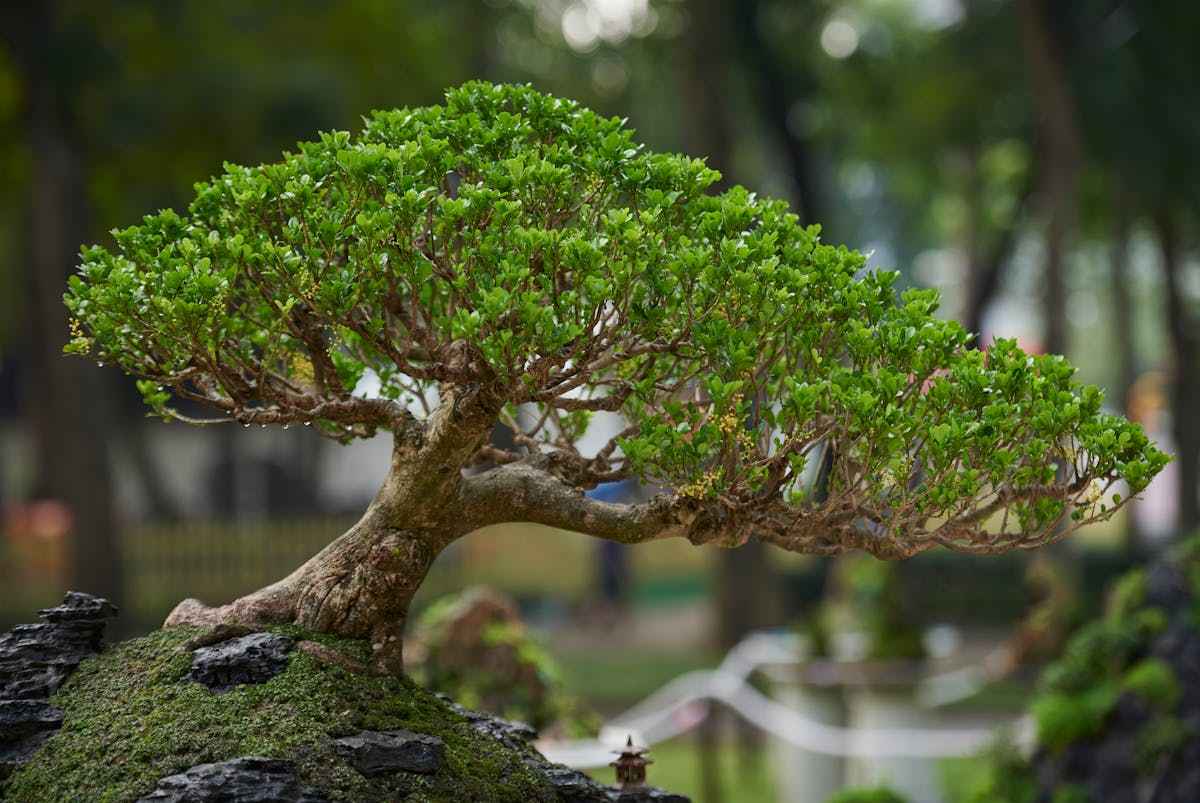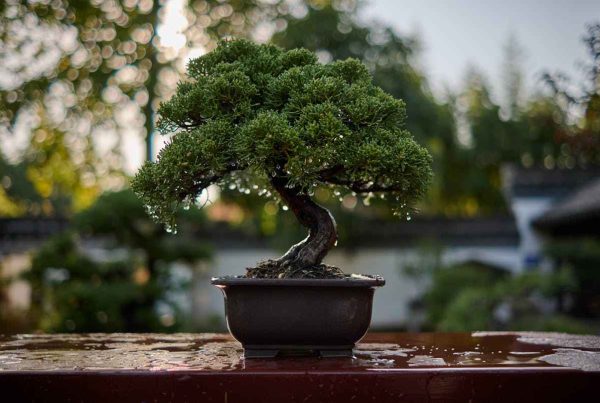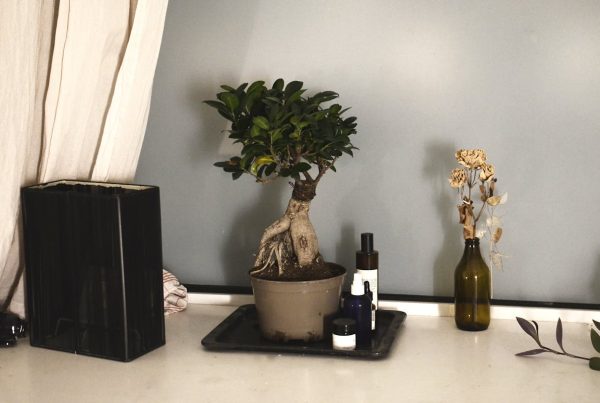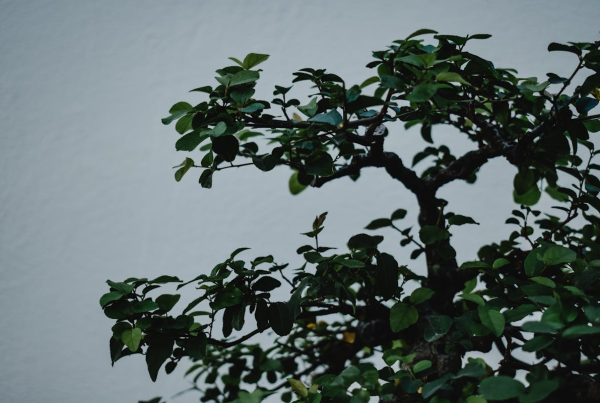The art of bonsai began in China over 1,000 years ago and gained popularity in Japan over the centuries. Bonsai is not a distinct plant variety and there is no “bonsai species”; rather, they are normal trees. A bonsai is an ornamental tree in a pot. It is a miniature, stylized version of a natural tree. Dwarf trees are often used for bonsai. But, if you plant a bonsai in the ground, it will grow into a full-sized tree. There are landscape-style bonsai. They are usually called Penjing, the Chinese term for bonsai. Popular deciduous trees include the Japanese maple, Chinese elm, Japanese elm, holly, and wisteria. These trees lose their leaves in the fall. Ficus, dwarf ivy and cottoneaster are popular perennials. Gardeners prefer juniper, Japanese black and white pines, cedar, fir, hinoki cypress, and secuta. They are the best conifers. Whether a bonsai lives indoors or outdoors depends on the species. Indoor bonsai should be tropical. They need direct sunlight for most of the day. One of the reasons ficus trees are so popular with bonsai beginners is that they can live indoors.
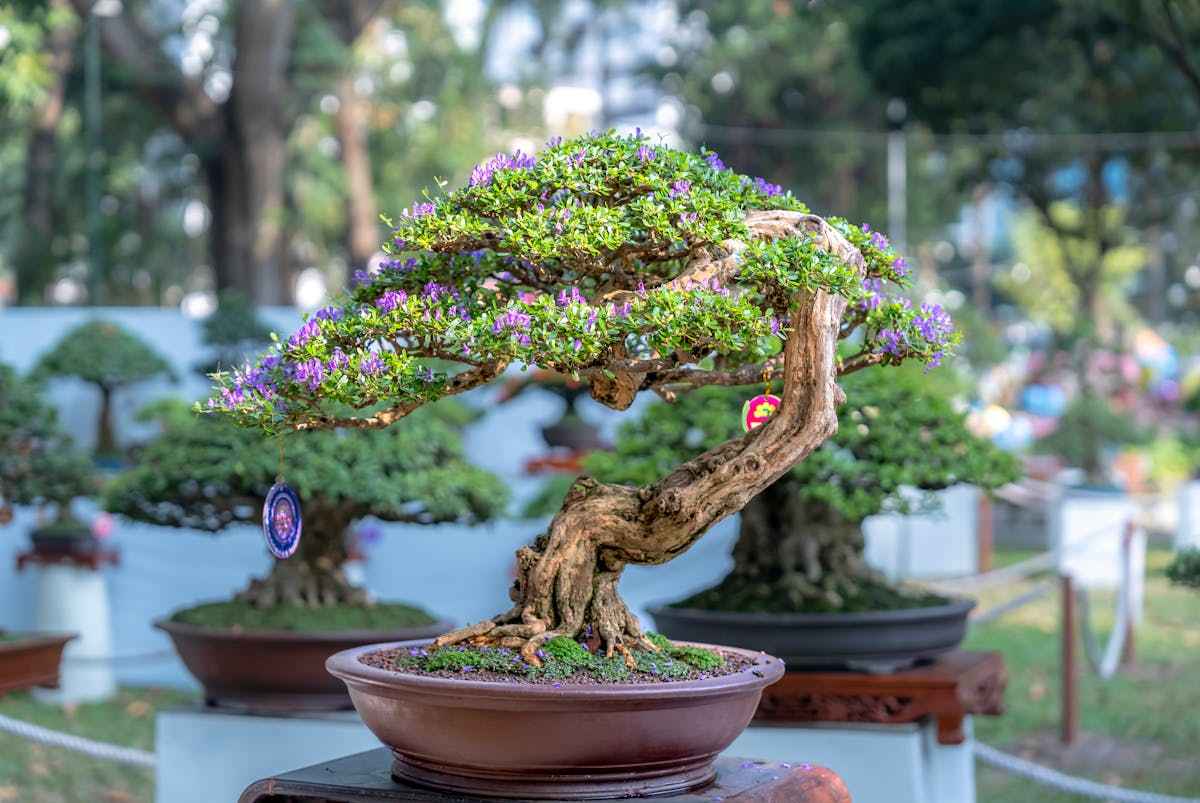
Bonsai Trees get
As there are many types of bonsai, bonsai can be grown in different sizes. The size class includes the tree’s height and weight in its pot. The number of people needed to move the tree and pot determines it. The largest bonsai, named imperial after the potted trees in Japan’s Imperial Palace, is called imperial. Bonsai size classification.
A large bonsai requires more care
Imperial, which is an eight-handed bonsai, 60-80″ (152-203 cm).
Hachi-uye, which is a bonsai with six arms, 40-60″ (102-152 cm).
Dai or Omono, which are bonsai with four arms, 30-48″ (76-122 cm).
Medium-sized bonsai are two-handed
- Chiu or Chumono or Ōgata, 16-36″ (41-91 cm)
- Katade-mochi or Chuhin, 10-18″ (25-46 cm)
- A miniature bonsai is a small tree that does not take more than one hand.
- Kumono or Kifu is a one-handed bonsai, 6-10 in (15-25 cm).
- Shohin or Chohin is also a one-handed bonsai, 5 to 8 inches (13–20 cm).
- Mame fits in the palm of your hand, 2-6 in (5-15 cm).
- Sold is finger size, 2-4″ (5-10 cm).
- Keshitsubo is a small tree, about the size of a poppy seed, 1-3 inches (3-8 cm).
A bonsai’s shape comes from regular pruning. It also needs careful maintenance of its roots and leaves or needles. Any type of tree with a permanent structure such as wood, vine, or shrub is a candidate for bonsai. Some cacti, succulents, and pachycaul (such as the desert rose) can also be used to make bonsai plants. Bonsai is a natural and organic art form that brings joy to bonsai lovers and enthusiasts.
You can plant bonsai trees in ceramic or concrete pots, in stones, or in single containers. Bonsai containers come in many styles and sizes and should have drainage holes. There are conventions for choosing bonsai containers, depending on the type of tree. A general rule is that the pot’s height must match the trunk’s width above the visible roots. The depth of the pot is mainly determined by the circumference of the trunk. The size of the pot is determined by the visual weight of the combination of foliage and trunk. The style of the pot is chosen based on the style of the tree, which is open to interpretation.
The pot is an important element for the overall health and growth of the roots. Using a shallow pot helps strengthen the tree’s roots and prevents the tree from growing too fast. A shallow container limits the spread and expansion of the root system. A tree is often repotted from a larger pot to a smaller one for similar reasons. As a mature young tree, it can grow from a small container to an even smaller bonsai! Regardless of the rules, if the combination of a pot and a tree brings joy to its owner, so the chosen pot works with the tree!
Proper care is vital for the tree’s health and growth. Key factors include water, sunlight, weather, fertilization, and suitable bonsai pots. With good care, a bonsai tree can grow several times a year.
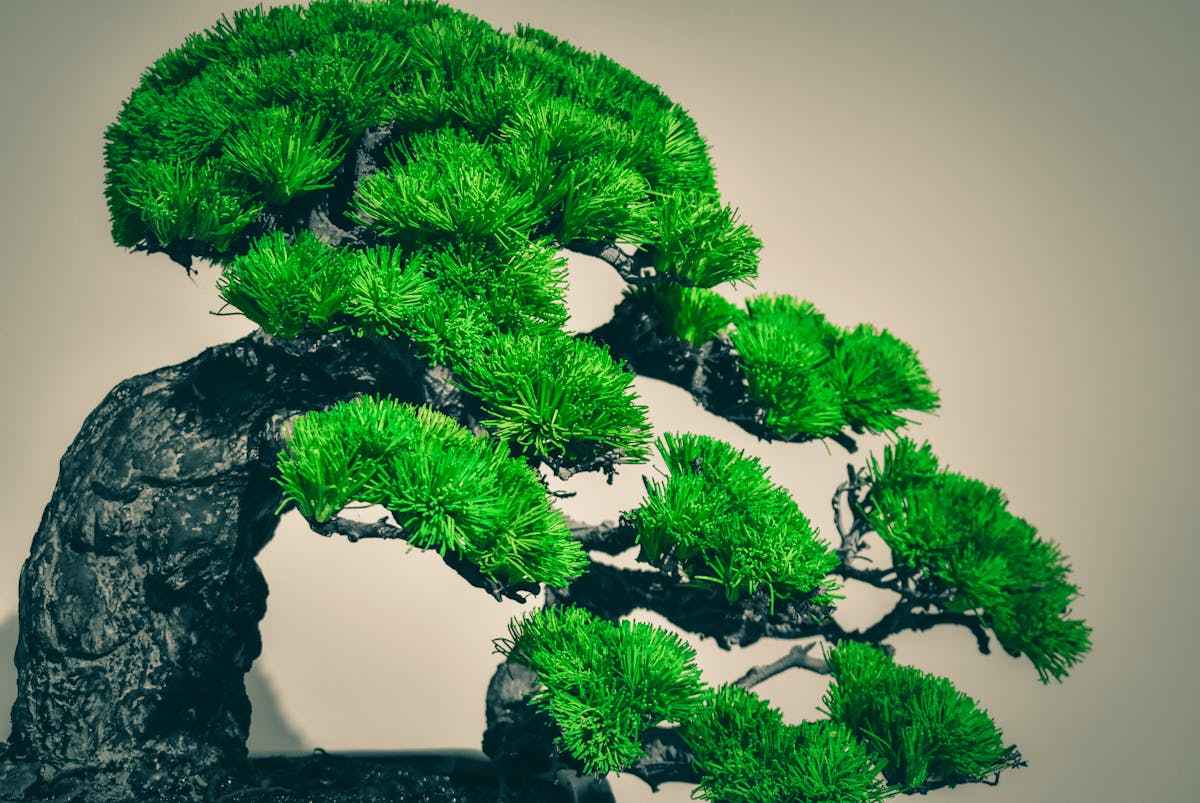
Bonsai Records
Some fun bonsai records
The smallest bonsai in the world (pending a Guinness record) is a Japanese maple. It really is a miniature tree!
The world’s largest bonsai is believed to be a red pine located at the Akao Herb and Rose Garden in Atami, Japan. It is also one of the oldest bonsai trees. The tree is at least 5 meters high and 9 meters wide. It qualifies as a bonsai because it grows in a pot. (Photo by Akao Herb & Rose Garden)
One of the oldest bonsai trees in the world is Ficus retusa Linn (from the fig family). Experts estimate that the bonsai tree is at least 1,000 years old and is grown in the oldest bonsai pot. Chinese bonsai masters have cared for this tree for a long time. It was then transferred to Italy, where it is now in the Crespi Bonsai Museum.
To learn more about bonsai, visit a public collection. See high-quality trees up close. Join a local bonsai club to connect with enthusiasts. Or, sign up for workshops with a bonsai pro. Notable collections include:
the Bonsai and Penjing Museum at the National Arboretum (Washington, D.C.) the Chicago Botanic Garden (Chicago, IL); the Clark Center Bonsai Collection at Shinzan Friendship Gardens (Fresno, CA); and the Lake Merritt Bonsai Garden (Oakland, CA).
SE); Bonsai Museum of the Pacific (Federal St, WA); Huntington Botanical Garden (San Marino, CA). The James J. Smith Gallery (tropical species) at Heathcote Botanical Gardens, Fort Pierce, FL. The American Bonsai Society has compiled a comprehensive list.
So how big are bonsai trees? It is up to the patience, temperament, and preferences of the bonsai artist to decide!
